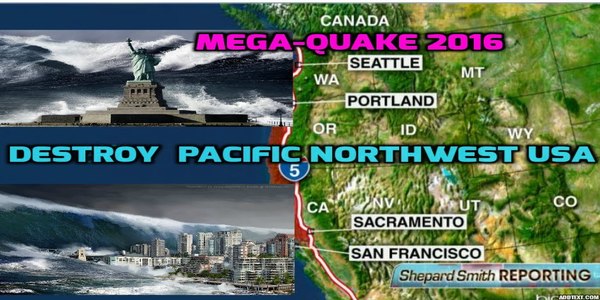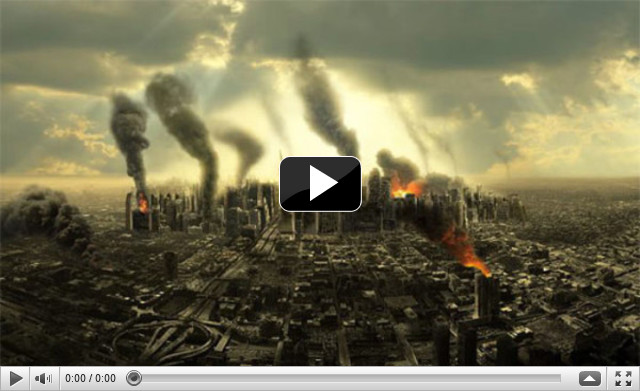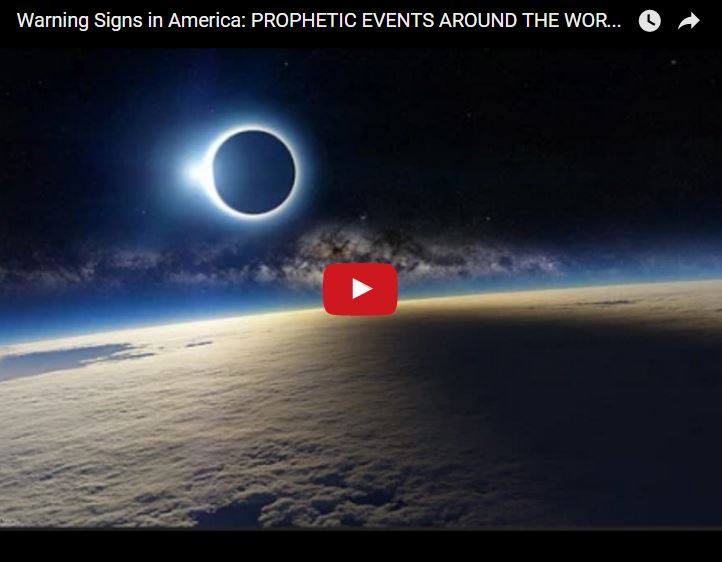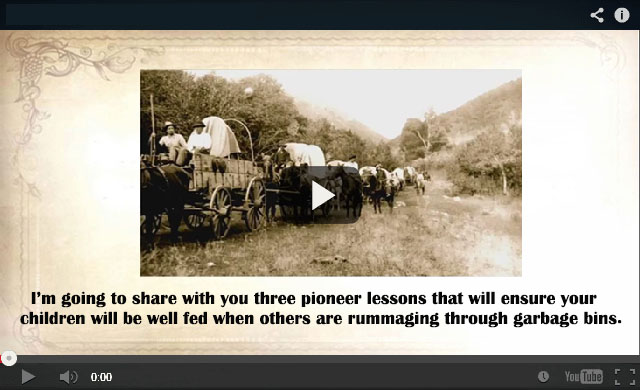If you live in the Pacific Northwest, you have probably already heard of the Cascadia Subduction Zone. Most Americans expect the next great earthquake in the United States to come on the west coast. But what if it strikes right down the middle of the country instead? The New Madrid fault zone is six times larger than the San Andreas fault zone in California and it covers portions of Illinois, Indiana, Ohio, Missouri, Arkansas, Kentucky, Tennessee and Mississippi. Back in 1811 and 1812, a series of absolutely devastating earthquakes along the New Madrid fault zone opened very deep fissures in the ground, caused the Mississippi River to run backwards in some places, and were reportedly felt as far away as Washington D.C. and Boston. They were the strongest earthquakes ever recorded east of the Rocky Mountains, and scientists tell us that it is only a matter of time before we experience similar quakes. In fact, the U.S. Geological Survey has admitted that the New Madrid fault zone has the “potential for larger and more powerful quakes than previously thought“, and the number of significant earthquakes in the middle part of the country has more than quintupled in recent years. Someday, perhaps without any warning, an absolutely massive earthquake will strike the New Madrid fault. Thousands of Americans will die, tens of thousands of structures will be completely destroyed, and millions of people will find themselves homeless.
Unlike on the west coast, buildings within the New Madrid fault zone are typically not constructed to withstand major earthquakes. If we were to see the type of earthquake that we saw a little over two centuries ago, it would be a disaster unlike anything that any of us have ever known. The following comes from WKRN, and it describes what those earthquakes back in 1811 and 1812 were like…
Can you believe that in the winter of 1811-1812 a series of earthquakes in northwest Tennessee shook the ground so hard that church bells rang on the East Coast and sidewalks cracked in Washington D.C?
The sitting president, James Madison, was even awakened in the middle of the night by the shaking of the White House.
In Tennessee, and surrounding states, the early settlers and Native American Indians were terrified by the shaking. Large fissures opened up in the ground, and some witnessed the Mississippi River appearing to flow backwards.
It is believed that those quakes shook an area ten times larger than that impacted by the 7.8 San Francisco earthquake of 1906. Some of the giant cracks that opened up in the ground were up to five miles long, and the stench of fire and brimstone hung in the air for months afterwards.
So what would that look like?
What would a 9.0-magnitude quake that also produced a huge tsunami do to the highly populated northwest coast?
According to an article in the New Yorker, the head of the FEMA division that oversees Oregon, Washington, Idaho and Alaska says that “everything west of Interstate 5 will be toast”…
If the entire zone gives way at once, an event that seismologists call a full-margin rupture, the magnitude will be somewhere between 8.7 and 9.2. That’s the very big one.
…By the time the shaking has ceased and the tsunami has receded, the region will be unrecognizable. Kenneth Murphy, who directs FEMA’s Region X, the division responsible for Oregon, Washington, Idaho, and Alaska, says, “Our operating assumption is that everything west of Interstate 5 will be toast.”
In the Pacific Northwest, everything west of Interstate 5 covers some hundred and forty thousand square miles, including Seattle, Tacoma, Portland, Eugene, Salem (the capital city of Oregon), Olympia (the capital of Washington), and some seven million people.
Like I said earlier, it would be far worse than any natural disaster that we have ever experienced in the history of the United States up until now.
And it could happen at literally any moment. In fact, many scientists believe that we are way overdue for a continent-altering earthquake along the Cascadia Subduction Zone. Tension has been building up there for a very long time, and at some point that tension will be released.
A recent piece by Adam Rothstein gives us an idea of what the first few moments of such a quake might look like in the city of Portland, Oregon…
Cacophony swells from the city as if it is howling in response to the earth’s call: car alarms, shattering glass, the thudding of bricks popping out of building facades, humans screaming in fright, and far off, echoes of what sound like dumpsters clattering to the ground from the jaws of garbage trucks. It is the sound of shifting foundations and collapsing masonry, continuously, a roar increasing from every direction. It is the sound of the living surfaces that a city takes for granted becoming undone.
Since we have not experienced such an earthquake in any of our lifetimes, it is easy to assume that one will never happen.
But that is not what the scientists are telling us.
In fact, they insist that the odds of “a continent-rending earthquake” in the near future are actually quite good…
The Pacific Northwest is due for a continent-rending earthquake. Experts believe the odds of a Big One happening in the next half century are about one in three, the odds of a Very Big One roughly one in ten, and that, in either case, we are disastrously unprepared.
And let us not forget that the Cascadia Subduction Zone sits directly along the Ring of Fire, and the Ring of Fire has started to become much more active in recent years.
In addition, if the region starts to become more seismically active there is also a very real possibility that we could see a full-blown eruption of Mt. Rainier, which has been described as “the most dangerous mountain in America“.Mt. Rainier has been dubbed a “time bomb“, “the most dangerous mountain in the United States” and “one of the most dangerous volcanoes in the world” because it sits so close to Seattle, Tacoma and other major cities along the coast of Washington state. In the event of a full-blown eruption, countless numbers of people would literally be buried alive in a tsunami of super-heated mud. These tsunamis of super-heated mud are known as “lahars”, and scientists believe that Mt. Rainier is capable of producing lahars that could move at speeds of up to 50 miles per hour.
So what should we do?
As always, we should never give in to fear. There are definitely going to be major earthquakes and historic volcanic eruptions in North America, and we are going to have to deal with them. Doing some common sense things in advance will give you and your family the best chance of calmly and smoothly making it through such a crisis.This first set of tips suggests things that you and your family can do to get prepared for a major earthquake…:
Gather Emergency Supplies
Stock up now on emergency supplies that can be used after an earthquake. These supplies should include a first aid kit, survival kits for the home, automobile, and workplace, and emergency water and food. Store enough supplies to last at least 3 days.
Evacuation Plans
If an earthquake occurs, you may need to evacuate a damaged area afterward. By planning and practicing for evacuation, you will be better prepared to respond appropriately and efficiently to signs of danger or to directions by civil authorities.
- Take a few minutes with your family to discuss a home evacuation plan. Sketch a floor plan of your home; walk through each room and discuss evacuation details.
- Plan a second way to exit from each room or area, if possible. If you need special equipment, such as a rope ladder, mark where it is located.
- Mark where your emergency food, water, first aid kits, and fire extinguishers are located.
- Mark where the utility switches or valves are located so that they can be turned off, if possible.
- Indicate the location of your family’s emergency outdoor meeting place.
Establish Priorities
Take time before an earthquake strikes to write an emergency priority list, including:
- important items to be hand-carried by you
- other items, in order of importance to you and your family
- items to be removed by car or truck if one is available
- things to do if time permits, such as locking doors and windows, turning off the utilities, etc.
Write Down Important Information
Make a list of important information and put it in a secure location. Include on your list:
- important telephone numbers, such as police, fire, paramedics, and medical centers
- the names, addresses, and telephone numbers of your insurance agents, including policy types and numbers
- the telephone numbers of the electric, gas, and water companies
- the names and telephone numbers of neighbors
- the name and telephone number of your landlord or property manager
- important medical information, such as allergies, regular medications, etc.
- the vehicle identification number, year, model, and license number of your automobile, boat, RV, etc.
- your bank’s or credit union’s telephone number, account types, and numbers
- radio and television broadcast stations to tune to for emergency broadcast information
Gather and Store Important Documents in a Fire-Proof Safe
- Birth certificates
- Ownership certificates (automobiles, boats, etc.)
- Social Security cards
- Insurance policies
- Wills
- Household inventory, including:
- list of contents
- photographs of contents of every room
- photographs of items of high value, such as jewelry, paintings, collectors’ item
In the end, you have got to do what you feel is best for you and your family.
Personally, I would be extremely hesitant to live in very high risk areas along the west coast or near the Yellowstone supervolcano. This is especially true considering how dramatically global seismic activity is increasing.But others point to the fact that these “danger areas” have not seen any major events in decades, so they wonder what all of the fuss is about.
When a natural or man made disaster hits, you need to know how to survive! It will be up to you, if your family survives! Not the government, they don’t have the manpower for a nationwide CATASTROPHE. You need The Lost Ways book! A treasured book of American survival! Knowledge lost through the years, as we advanced from the 19th century. Once the industrial revolution was born, we slowly lost our survival skills. Our forefathers survived without a car, smart phone, supermarkets, electricity and everything else an untamed America threw at them. These long lost secrets will help you and your family survive if and when America finally collapses into chaos.
You are also going to learn the same lessons America’s early pioneers learned that will ensure you and your family will be well fed when your neighbor, friends and fellow Americans are rummaging through garbage cans looking for scraps. In fact, these lost survival skills will change your life immediately once you learn about The Lost Ways.Watch the video and learn more:






